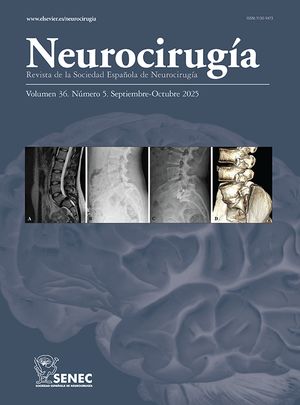We describe the first case in which Pantopaque induced the formation of an arachnoidal cyst, without any previous surgery or pathological condition. This Pantopaque-filled cyst was able to produce a thoracic spinal cord compression syndrome.
Clinical presentationProgressive paraparesia developing over a two year period in a 74-year-old male. 17 years before a Pantopaque mielography had been obtained in order to rule out cranio-cervical junction pathology. The study was normal. There was no surgical intervention on the spine. MRI identified a dorsally placed cystic, T10 intradural-extramedullary lesion, hyperintense on T1 and iso-hypointense on T2.
InterventionPuncture, aspiration and excision of a Pantopaque-filled arachnoidalñ cyst were performed through a T9-Tlllaminectomy.
ConclusionPostoperative evolution was uncomplicated, with complete recovery of patient's motor deficit. In our case, Pantopaque was the only known etiological factor related to the formation of the arachnoidal cyst. There was neither previous cranial or spine surgery nor other known pathology. The role which the posterior subarachnoidal trabeculae and septum posticum could have played is considered. MRI Pantopaque features may resemble both fat and hemorrhage. In these cases plain X-ray is stili the best guide to correct diagnosis.
Artículo

Si es la primera vez que accede a la web puede obtener sus claves de acceso poniéndose en contacto con Elsevier España en suscripciones@elsevier.com o a través de su teléfono de Atención al Cliente 902 88 87 40 si llama desde territorio español o del +34 932 418 800 (de 9 a 18h., GMT + 1) si lo hace desde el extranjero.
Si ya tiene sus datos de acceso, clique aquí.
Si olvidó su clave de acceso puede recuperarla clicando aquí y seleccionando la opción "He olvidado mi contraseña".







